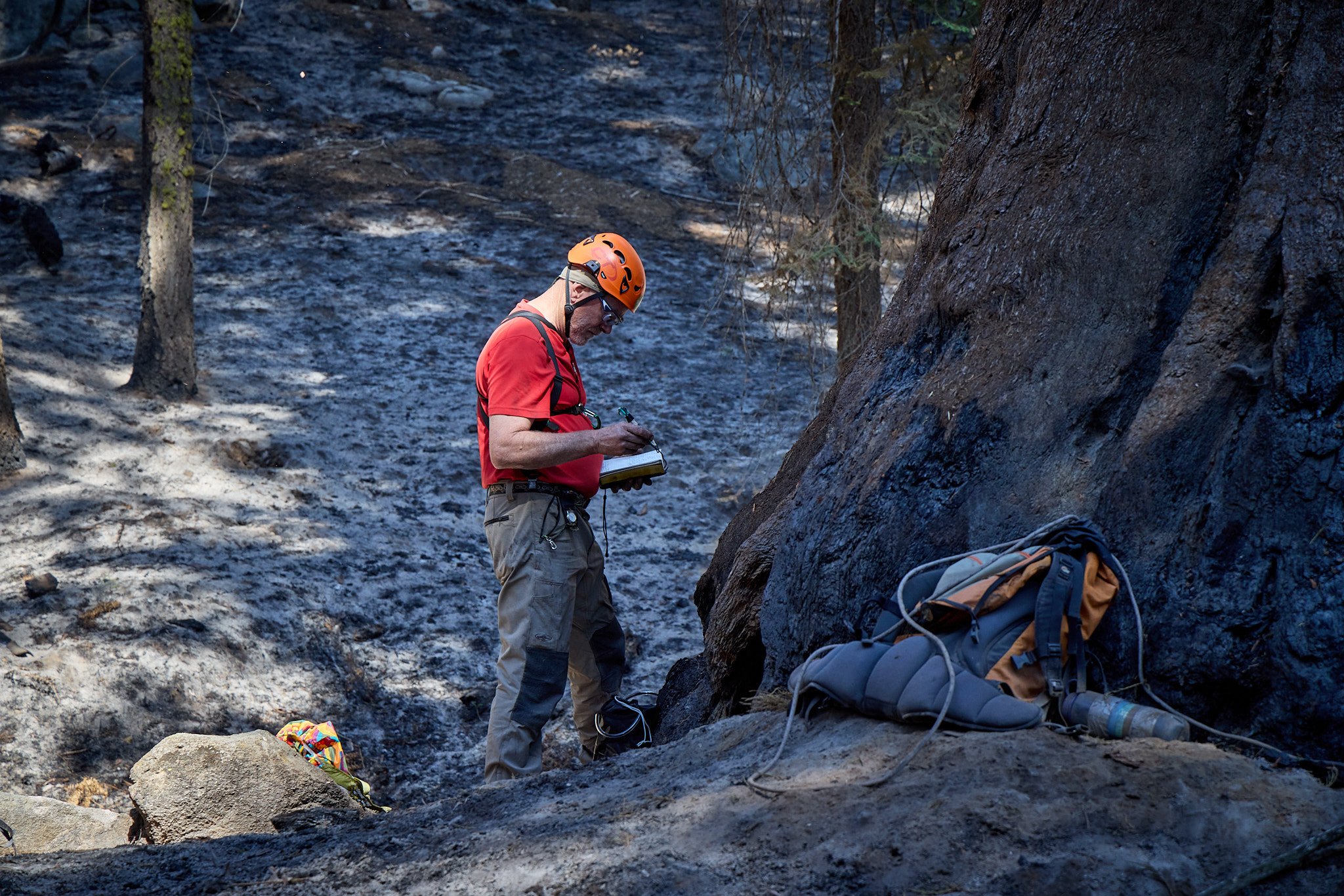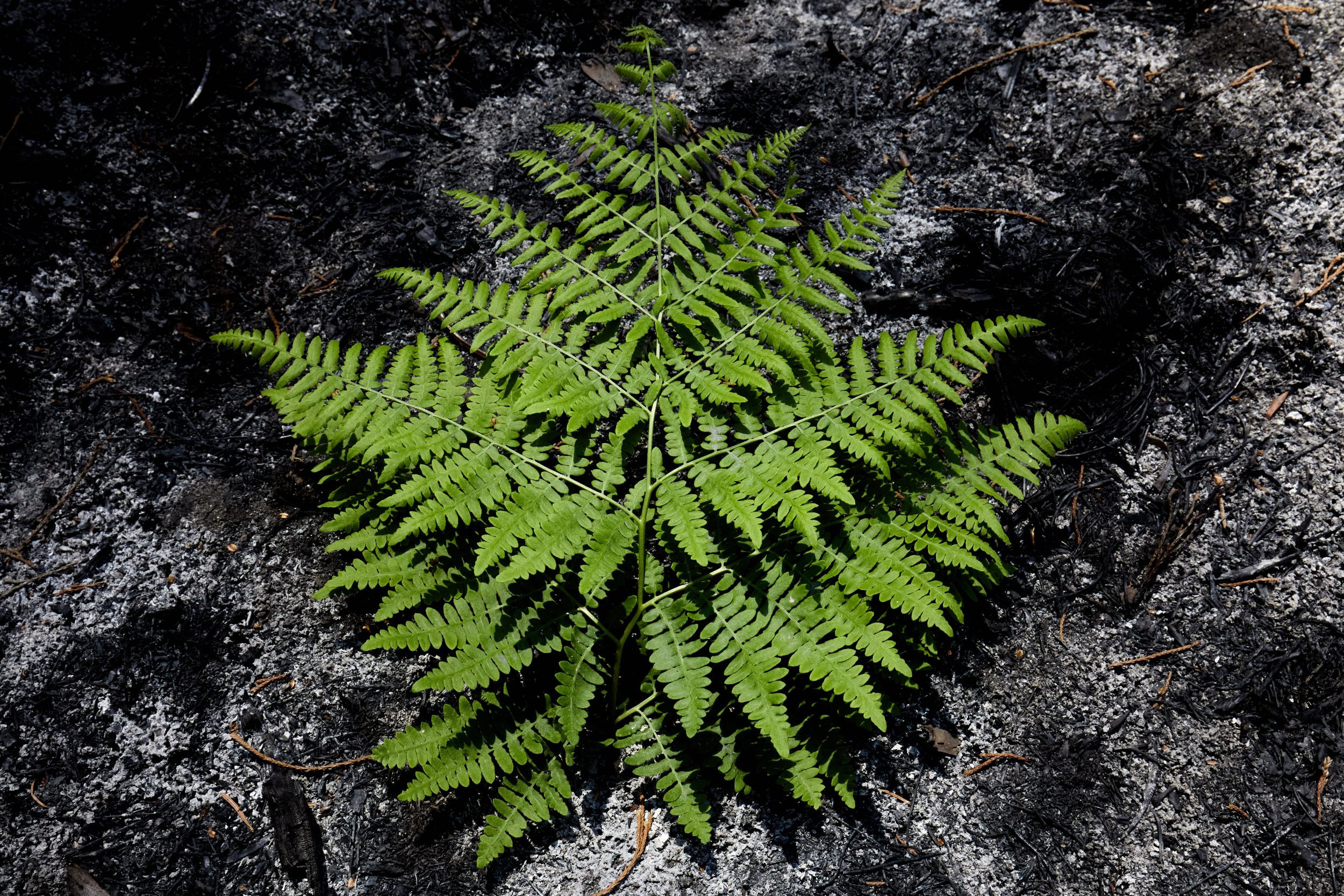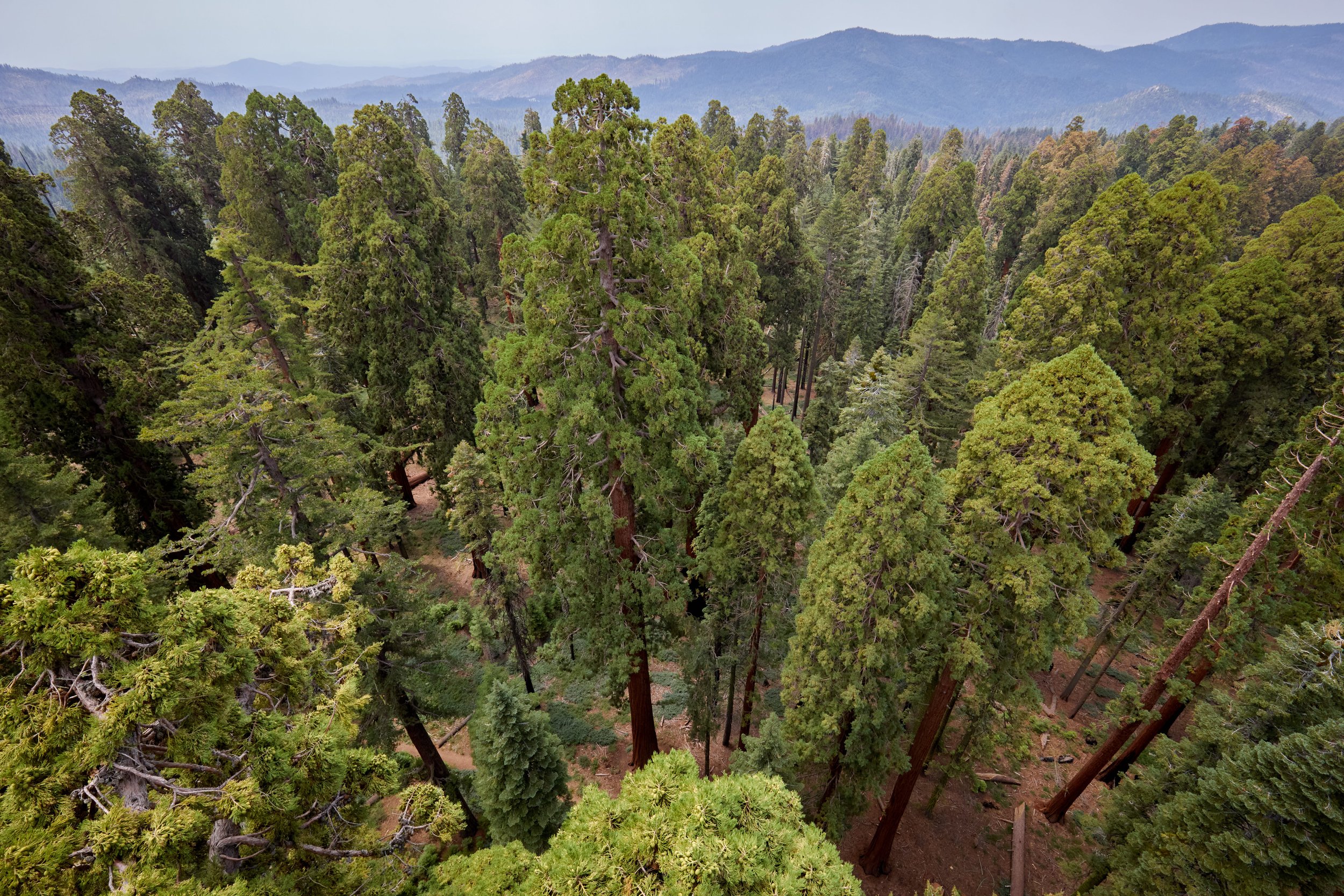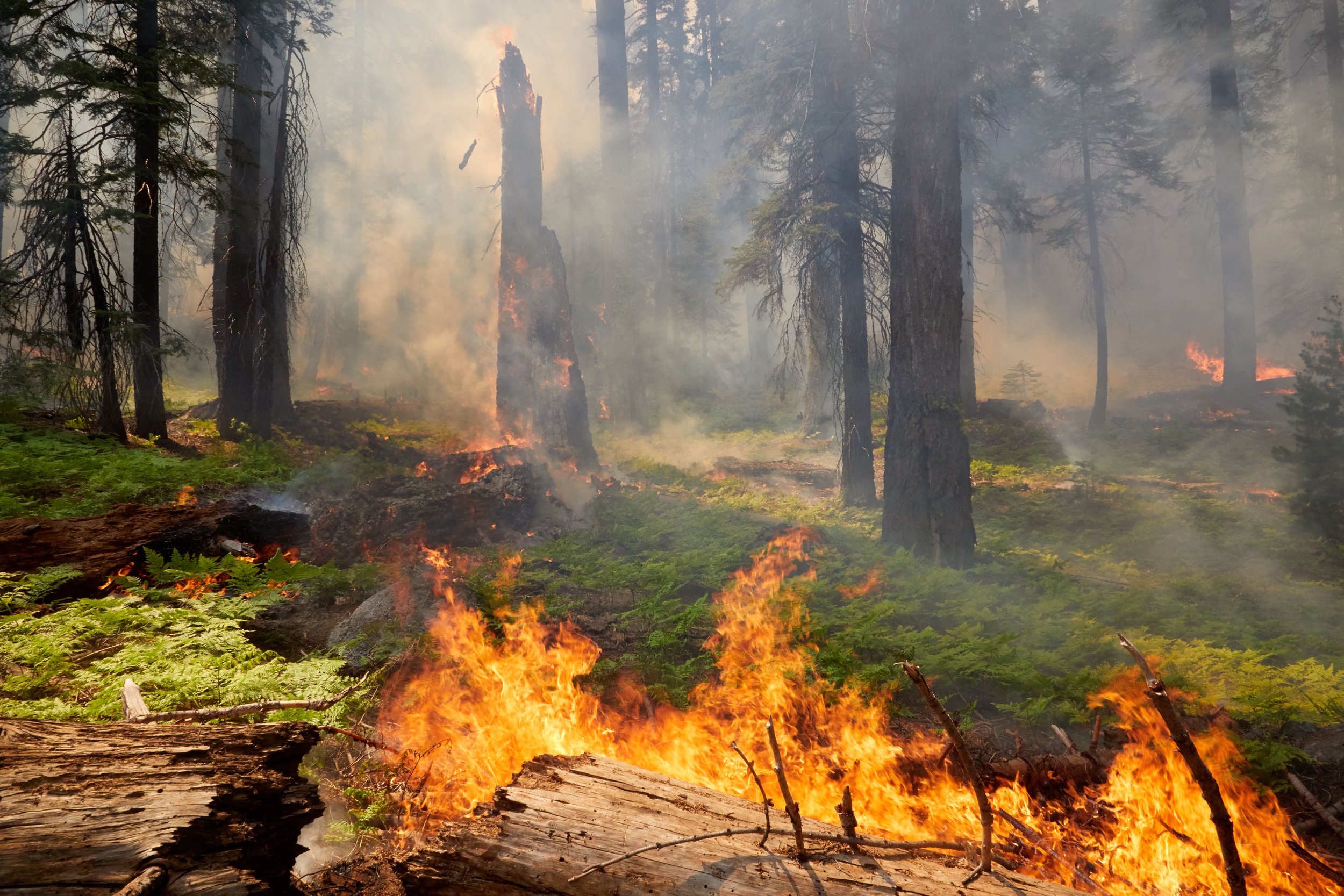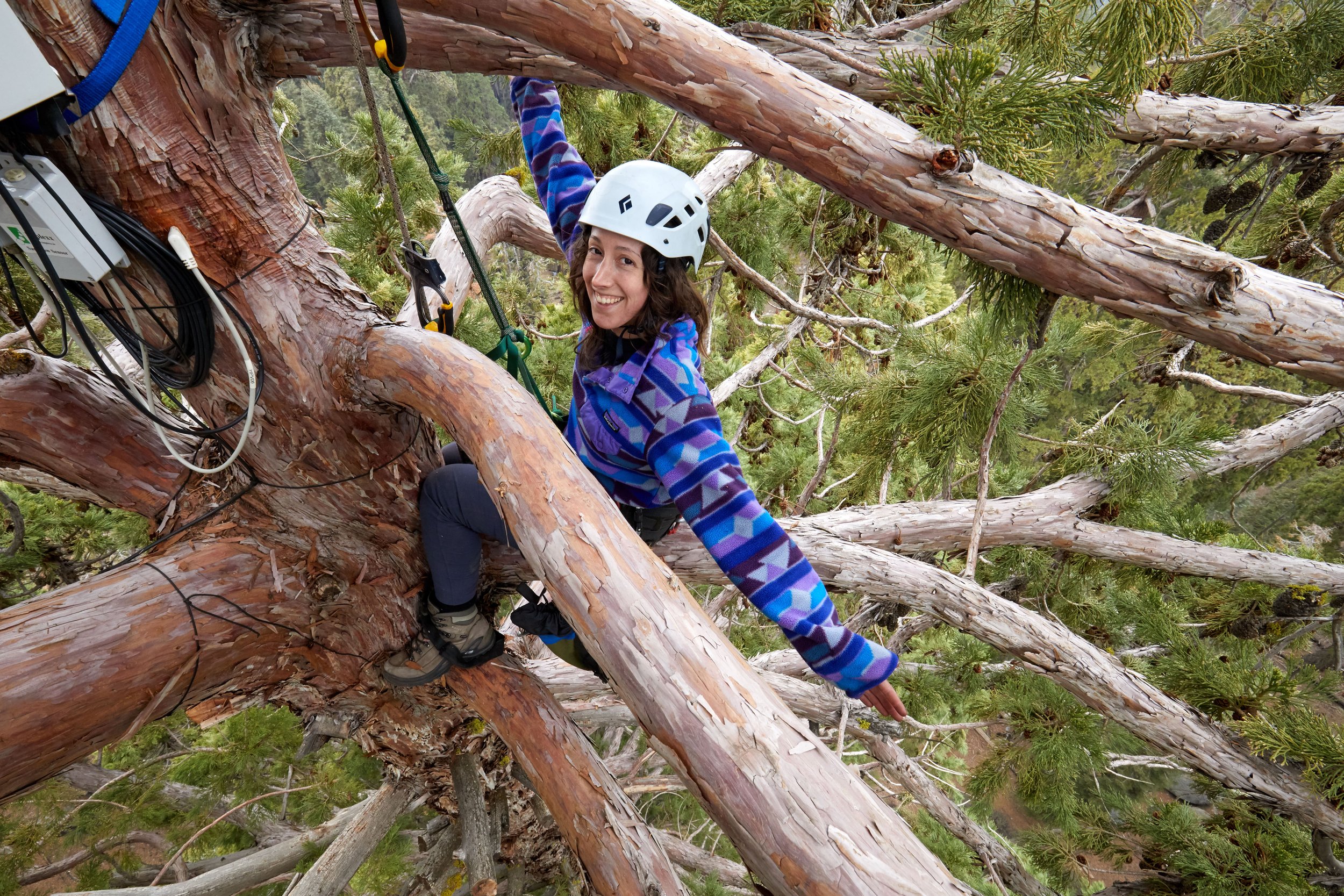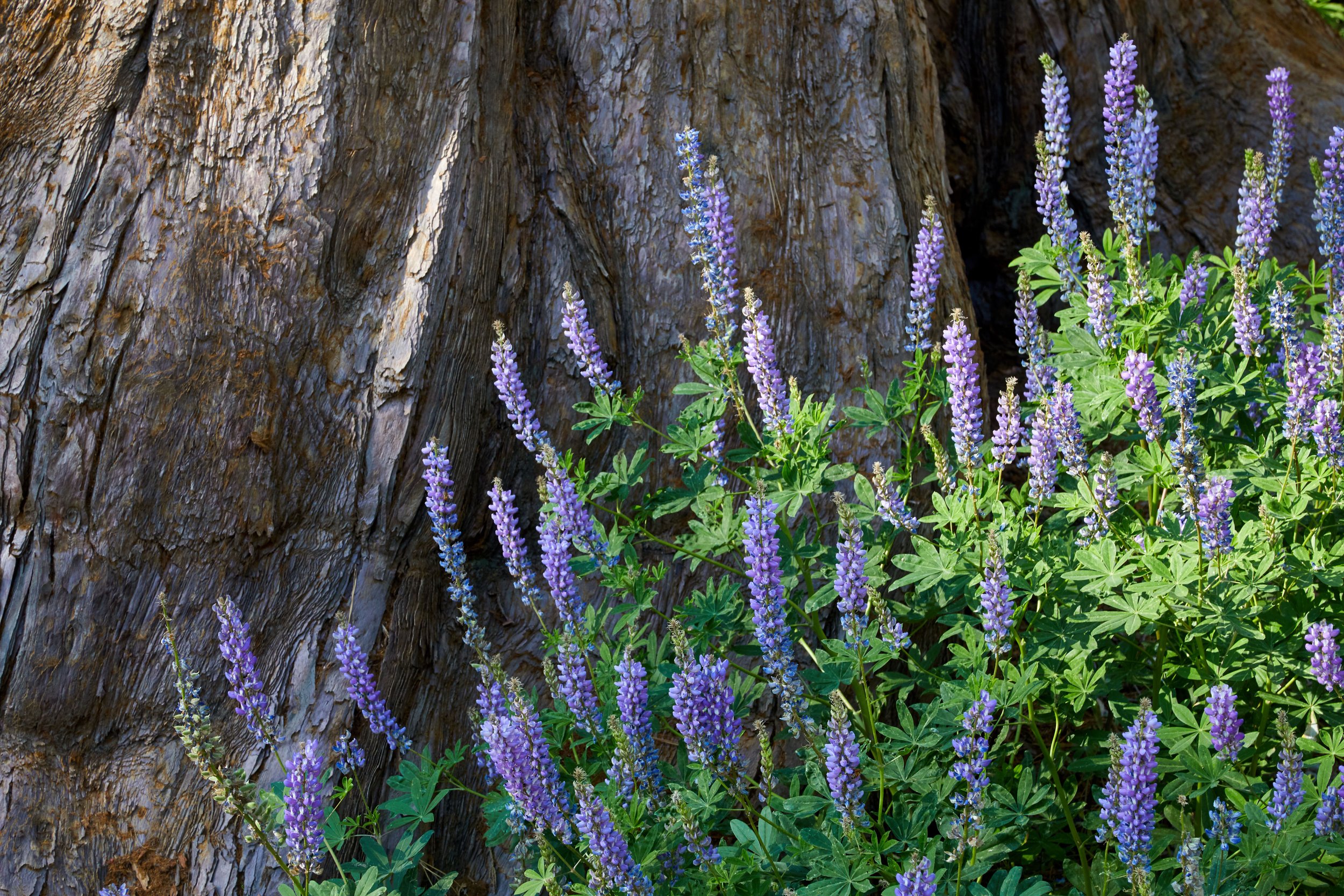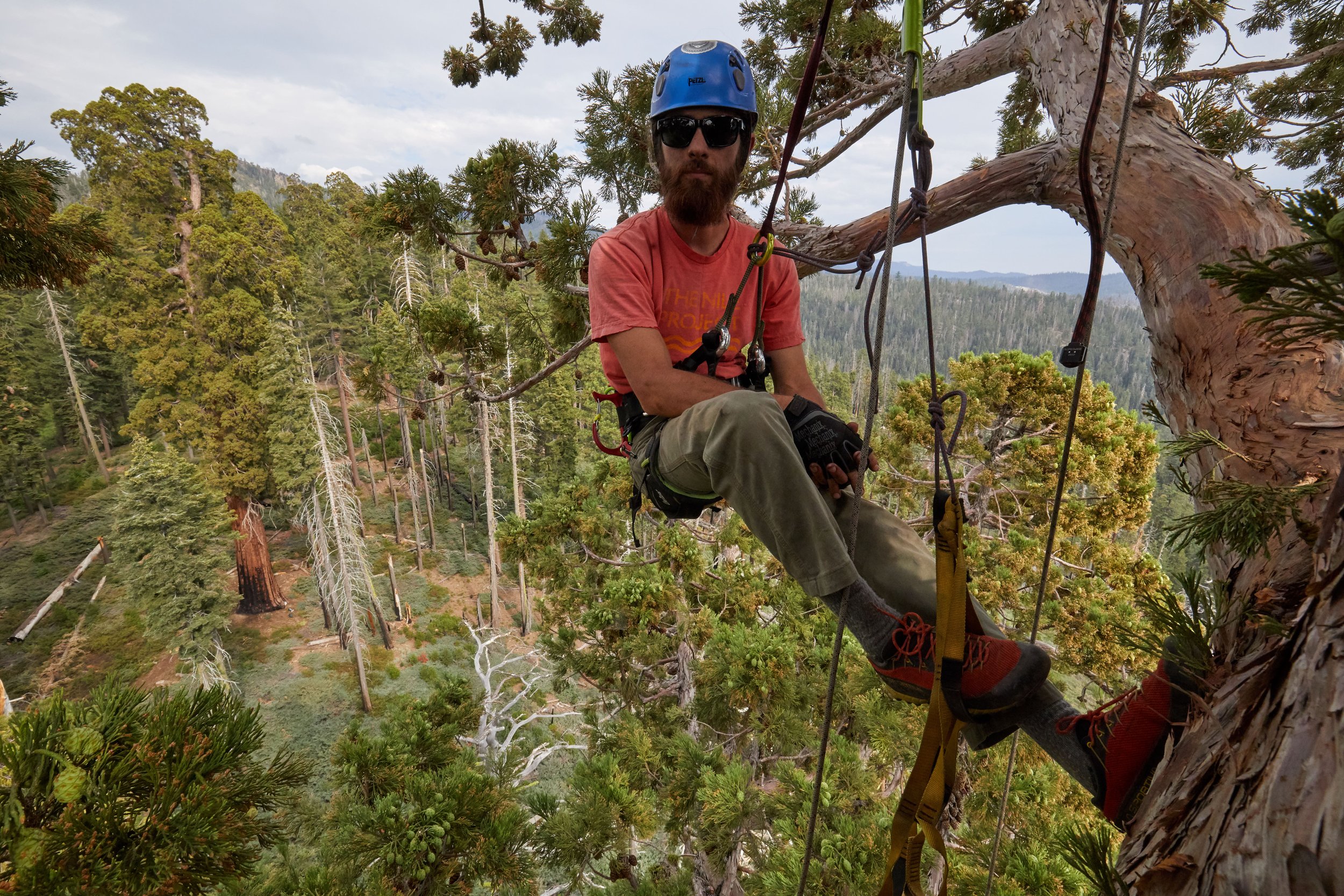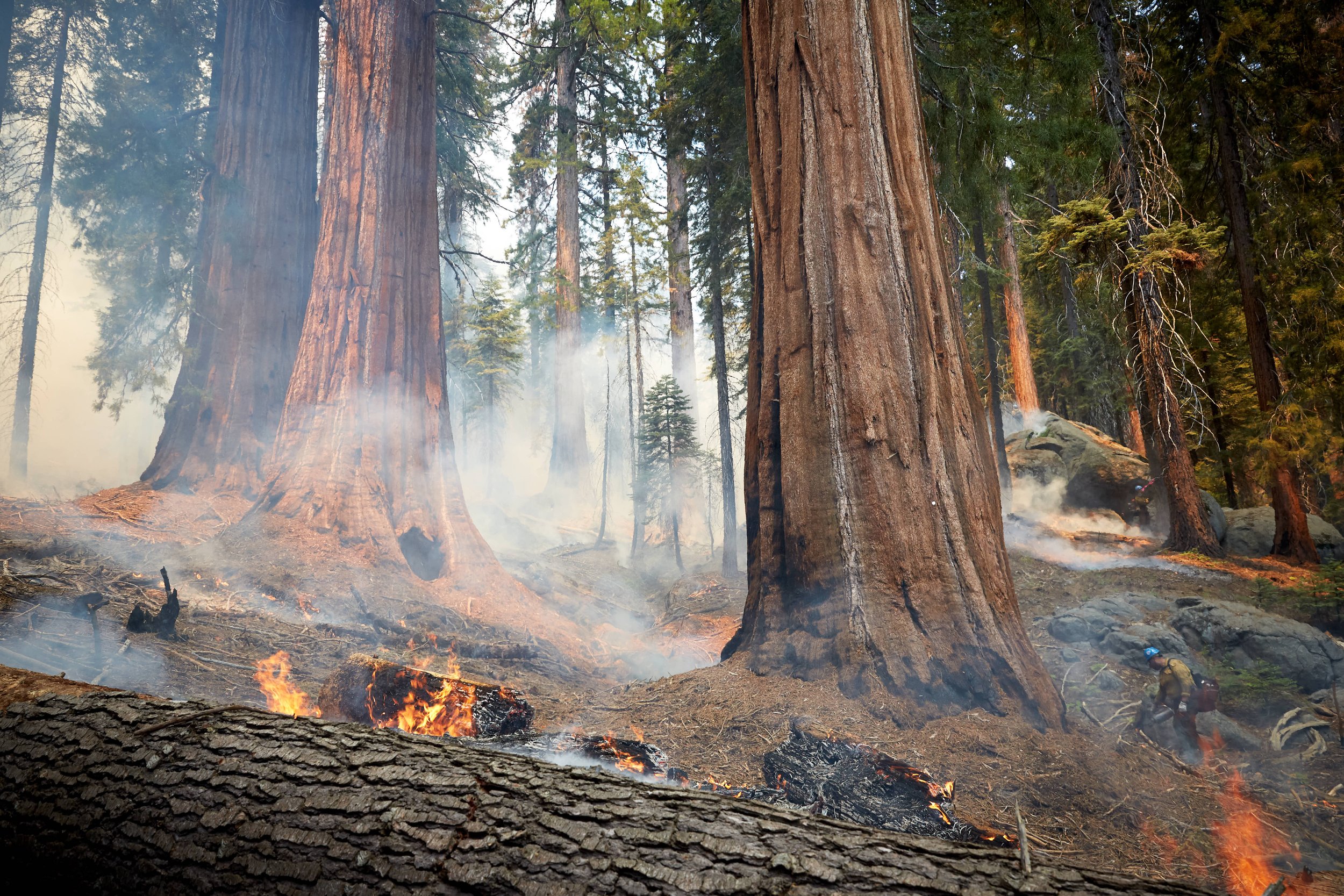
Giant Sequoia Fire and Water Study
This study examines the impact of fire on giant sequoias’ water sources and water abundance across the landscape.
Born of fire and sustained by water, the world’s largest trees, the giant sequoia (Sequoiadendron giganteum), are restricted to wet pockets on the western slope of the Sierra Nevada Mountains of California. Growing sometimes for more than 3,000 years, these iconic trees are resilient and resourceful, full of survival strategies that enable them to endure fire, drought, lightning, and fierce winter storms.
In an era of rapid climate change, these seemingly indestructible giants are facing new and emerging threats. Fire, while essential for regeneration and the health of giant sequoia forests, is becoming more severe and destructive. Droughts are becoming more common and hotter. The snowpack that typically melts in the spring and into summer, slowly supplying water to these water thirsty giants, is declining and melting earlier. Western cedar bark beetles, native to the forest, contributed recently to the death of severely burned, drought stricken giant sequoias. Counterintuitively, the trees that died were growing in wet locations.
The Ancient Forest Society is working in partnership with Sequoia, Kings Canyon and Yosemite National Parks, US Geological Survey, Sequoia Parks Conservancy, Northern Arizona University, University of Arizona and others to better understand the important dynamics between fire and water in giant sequoia trees. Prescribed fire is an essential management tool used actively in both parks, but if fire is too severe, it can weaken trees and make them susceptible to drought and beetle attack. Managers would like to know which trees are more vulnerable so they can focus on reducing fire impacts to those trees.

Study Questions
Where do giant sequoia trees get their water?
How do drought and fire affect tree water use dynamics?
How does tree hydrology influence giant sequoia mortality risk?
Methods
-
85 Study Trees
We are studying 45 trees in Sequoia National Park and 40 trees in Yosemite National Park.
-
Prescribed Fire
Most of our study trees are located within planned prescribed fire units. We will collect samples and data before, during and after controlled fire.
-
Sapflow and Weather
Twenty trees are equipped with sapflow sensors that continuously monitor water movement at the top of the trees, three trees also have weather monitoring sensors.
-
Stable Isotopes
Water from tree xylem, soil, stream, well, and precipitation samples will be analyzed for hydrogen and oxygen stable isotopes. This will help identify where the trees are getting their water.
-
Wet vs Dry
We are comparing trees growing on wet sites to those growing on dry sites to better understand which are more vulnerable to drought and beetle attack.
-
Collaboration
We are working closely with our partners and collaborators to generate information that will help inform management decisions.
Prescribed Fire
Frequent, mixed severity fire is essential for the regeneration and health of giant sequoias. Small patches of high severity fire is essential for giant sequoia regeneration. All of our study trees are located in areas that will have prescribed fire a year or more after we start our research. This will enable us to make comparisons before and after prescribed fire. This short video shows the Tharps Prescribed Fire that took place in June 2022 around our Sequoia National Park study trees.
Partners and Funders



